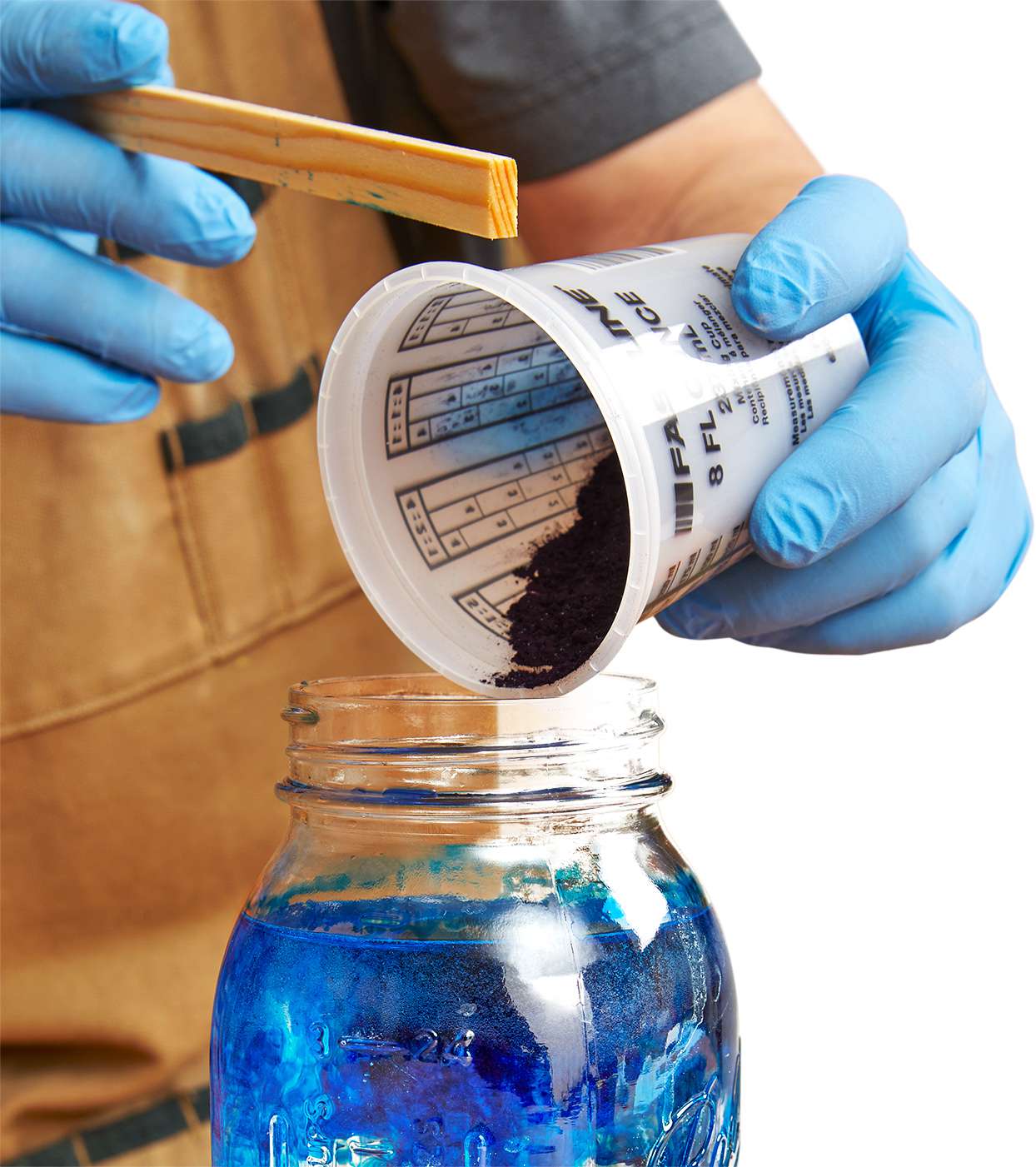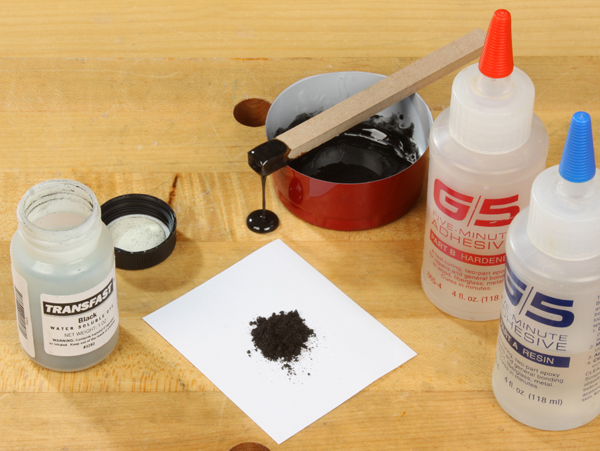Can you dye wood glue? If you’ve ever wondered if it’s possible to add color to your glue projects, you’re in the right place! In this article, we’ll explore the exciting world of dyeing wood glue and discover some creative ways to enhance your crafting projects. So, whether you’re a DIY enthusiast or a curious experimenter, get ready to dive into the colorful possibilities of dyeing wood glue!
Adding a touch of color to your woodworking projects can take them to a whole new level. And guess what? You can achieve that by dyeing your wood glue! But how does it work? Well, we’ll uncover the secrets behind dyeing wood glue, including what types of dye to use and how to mix them effectively. Get ready to unleash your creativity and transform ordinary glue into a vibrant work of art!
You may be wondering, “Why would someone want to dye wood glue?” Well, the answer is simple—it allows you to customize your projects and add a personal touch. From vibrant decorations to unique furniture pieces, dyeing wood glue can make your creations stand out from the crowd. So, let’s roll up our sleeves, grab our glue, and embark on an exciting journey into the world of colorful woodworking!

Can You Dye Wood Glue?
Wood glue has become an essential adhesive for woodworking projects, but can you dye it to achieve different colors or finishes? This article will explore the possibility of dyeing wood glue, the techniques involved, and the potential benefits and drawbacks of doing so. Read on to discover how you can add a touch of color to your woodworking creations with dyed wood glue.
How to Dye Wood Glue: Techniques and Tips
Dyeing wood glue can be a creative way to enhance the appearance of your woodworking projects. While wood glue itself is not typically found in a variety of colors, it is possible to transform it into vibrant hues or subtle tints. Here are three techniques you can use to dye wood glue:
1. Pre-Dyeing Method
The pre-dyeing method involves adding dye to the wood glue before using it in your project. Start by pouring the desired amount of wood glue into a separate container. Then, add a small amount of wood dye or a powdered fabric dye to the glue. Mix it thoroughly until the color is evenly distributed. Remember to consider the opacity of the dye and the amount needed to achieve the desired shade. Once the glue is colored to your liking, you can proceed to use it as you would with regular wood glue.
2. Post-Dyeing Method
If you have already completed your woodworking project and want to add a touch of color afterwards, the post-dyeing method is ideal. In this technique, you apply the wood dye directly onto the dried wood glue. This method allows you to control the intensity and placement of the color. Use a small brush or sponge to apply the dye to the glue, ensuring an even distribution. One advantage of the post-dyeing method is that you can experiment with different colors before committing to a final look.
3. Layering Method
The layering method involves using dyed wood glue to create unique patterns or effects on your project. Start by applying a base layer of wood glue as you would in a regular woodworking project. Allow it to dry completely. Then, mix a small batch of wood glue with a different color or shade. Apply this dyed glue on top of the base layer, using an applicator or brush to create texture or patterns. Continue layering with different colored glues to achieve the desired effect.
Benefits of Dyeing Wood Glue
Dyeing wood glue offers various benefits that can enhance your woodworking projects:
1. Aesthetic Appeal
By dyeing wood glue, you can add depth and visual interest to your projects. Whether you opt for bold and vibrant colors or subtle tints, dyed glue can make your woodworking creations stand out.
2. Customization
Dyeing wood glue allows you to customize the appearance of your projects according to your personal style or the specific requirements of a client. It provides flexibility in achieving the desired color palette, making your woodworking projects truly unique.
3. Concealing Imperfections
If you have minor imperfections or gaps in your woodworking project, dyeing the wood glue can help camouflage them. The color pigments in the glue can blend effectively with the surrounding wood, making the imperfections less noticeable.
Final Tips for Dyeing Wood Glue
Before you embark on dyeing wood glue, here are some tips to keep in mind:
1. Choose Compatible Dyes
When selecting a dye for your wood glue, ensure it is compatible with the glue’s composition. Some dyes may not mix well with certain types of glue, affecting the adhesive properties.
2. Test on Scrap Wood
Before applying the dyed glue to your main project, test it on a scrap piece of wood first. This will allow you to assess the color and ensure it matches your vision before committing to the final application.
3. Consider the Transparency
Keep in mind that the color of the wood glue may differ in transparency when compared to regular wood stains or dyes. Consider this when choosing the appropriate dye for your project to achieve the desired color intensity.
In conclusion, while traditional wood glue may not come in a variety of colors, it is indeed possible to dye it to add a touch of vibrancy or subtlety to your woodworking projects. With the right techniques and careful consideration of compatible dyes, you can create unique and visually appealing pieces that showcase your creativity and attention to detail. Experiment, have fun, and let your woodworking projects shine with the addition of dyed wood glue.
Key Takeaways: Can You Dye Wood Glue?
- Yes, it is possible to dye wood glue to achieve different colors.
- You can use acrylic paints or water-based dyes to color wood glue.
- Add a small amount of dye to the glue and mix it thoroughly to achieve the desired color.
- Make sure to test the dyed glue on a scrap piece of wood before using it on your project.
- Remember to follow the instructions provided by the dye manufacturer for best results.
Frequently Asked Questions
When it comes to woodworking projects, wood glue is an essential tool for joining pieces together. But can you dye wood glue? Here are some common questions and answers to help you understand more about this topic.
1. Can I add color to wood glue?
Yes, you can add color to wood glue to match the color of your wood or to create decorative effects. There are a few ways to achieve this. One option is to use wood stain or dye. Mix a small amount of stain or dye into the wood glue and stir well until the color is evenly distributed. Keep in mind that adding too much stain or dye may affect the glue’s adhesive properties, so start with small amounts and test it on scrap wood first.
Another option is to use powdered pigments or acrylic paint. Mix the pigment or paint with water and then add it to the wood glue. Again, start with small amounts and test it first. Remember that different types of wood glue may react differently to pigments or paints, so it’s always a good idea to do a small test before using it on your project.
2. Will dyeing wood glue affect its strength?
Adding color to wood glue may have some impact on its strength, but it largely depends on the type and amount of coloring agent used. Small amounts of wood stain or dye are unlikely to significantly affect the adhesive properties, especially if mixed well with the glue. However, using excessive amounts or certain types of pigments may weaken the glue’s bond.
To minimize any potential impact on strength, it’s important to test the colored wood glue on scrap wood or in inconspicuous areas before using it on your project. This will help you assess its adhesive capabilities and determine if any adjustments need to be made. Additionally, consider using a high-quality wood glue that is specifically designed for color mixing, as these are formulated to maintain maximum strength even when dyed.
3. Can I use food coloring to dye wood glue?
While it is possible to use food coloring to dye wood glue, it may not be the best option. Food coloring is water-based and may weaken the adhesive properties of the glue. Additionally, food coloring may fade over time and could potentially stain the wood if it seeps out. It’s generally recommended to use wood stain, dye, powdered pigments, or acrylic paint instead, as they are designed for coloring wood and are less likely to affect the strength or appearance of the glue.
4. What can I do if the color of the wood glue doesn’t match my project?
If the color of the wood glue doesn’t match your project, you have a few options. You can try adding more coloring agent to the glue to darken or adjust the hue. Alternatively, you can sand or scrape away the dried glue and reapply a new batch of colored glue that better matches your project. Another option is to use a wood filler that closely matches the color of your wood and apply it over the dried glue to create a seamless appearance.
Remember to always test any color adjustments on scrap wood or in inconspicuous areas before applying it to your project to ensure a satisfactory result.
5. Can I dye wood glue that is already dried?
No, it is not possible to dye wood glue that is already dried. Once wood glue dries, it forms a solid adhesive bond and cannot be altered or colored. If you need to change the color or appearance of the glue on your project after it has dried, your best option is to remove the dried glue and apply a new batch with the desired color.
However, keep in mind that removing dried glue can be challenging and may damage the surface of the wood. Prevention is key, so it’s important to plan and test your colors before applying the wood glue to ensure the desired outcome.

Colored Glue Using Liquid Dyes For A Very Nice Coloring Option DIY Glue Coloring
Summary
Wood glue cannot be dyed, as it is an adhesive and not a coloring agent. The glue is usually yellow or white, and any attempt to dye it will not result in a different color. However, you can paint over wood glue once it has dried to achieve the desired color on your project.
It’s important to remember that wood glue is primarily used for bonding wood pieces together, not for changing their color. If you want to add color to your woodworking project, consider using wood stains or paints instead. Wood glue is best left for its intended purpose of creating strong and lasting bonds in your woodworking projects.